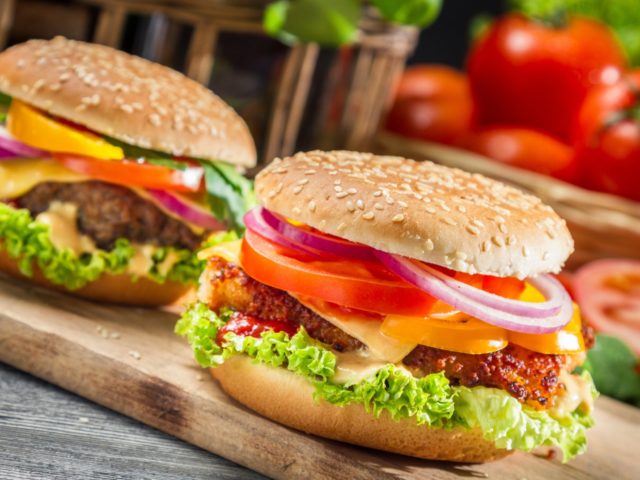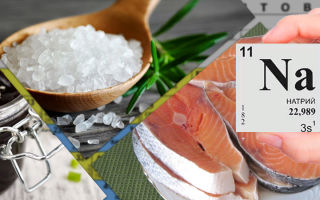Content
Sodium keeps the body healthy. The mineral regulates blood pressure and water balance. The substance also ensures the functioning of the nervous tissue and muscles. It is responsible for the transmission of impulses, muscle contraction. Thanks to the component, the required amount of liquid and pH balance are maintained. However, an increased intake of Na in the body can cause hypertension and the development of stomach cancer. Foods that are high in sodium should not be consumed in significant quantities.
The body's need for sodium
Deficiency of the substance causes serious disturbances in the body. The value of an element lies in the following properties:
- Sunstroke prevention... With prolonged exposure to ultraviolet rays, the body loses a lot of salt and water due to increased sweating. Heatstroke occurs due to dysregulation of body temperature. The sodium in salt water prevents or alleviates the effects of sunstroke.
- Prevention of muscle spasms... This phenomenon is often noted during dehydration. If a lack of sodium is the cause of muscle cramps, you should include in the menu rich foods.
- Ensuring adequate brain function... Sodium imbalance leads to confusion and dizziness.
- Ensuring absorption... The substance is absorbed by the small intestine and is involved in the absorption of amino acids, chlorides, water and glucose.
- Positive effect on the work of the cardiovascular system... The element acts on pressure. Excess is dangerous for the development of hypertension.
- Rfluid level regulation... Sodium is involved in the transport of substances necessary for the body.
- Maintaining ionic balance... This function contributes to the transmission of nerve impulses throughout the body and the occurrence of muscle contractions.

Sodium, present in food, cleanses the body of carbon dioxide. The substance is an anti-aging nutrient. It is found in various cosmetics for its ability to eliminate free radicals. The element maintains skin elasticity and hydration.
Sodium chloride (table salt) is good for dental tissue. It eliminates unpleasant odors thanks to its antibacterial properties and also strengthens the enamel. The substance is considered a powerful antiseptic.
Daily rate
The daily intake of the mineral varies depending on age characteristics:
- adults - 1500 mg;
- children - 1000 mg.
An increase in the indicator is recommended in the following cases:
- intense physical activity;
- diarrhea and vomiting;
- Addison's disease;
- taking drugs that have a diuretic effect;
- severe burns.
What foods contain sodium
The main source of the substance is table salt. List of foods that contain sodium:
- processed meat (sausages);
- rolls and bread;
- fast food (pizza, hamburgers);
- Domestic bird;
- cheese;
- seafood and fish;
- pickled vegetables;
- canned food;
- salty snacks.
What foods in the daily diet are high in sodium
Regular consumption of certain foods can cause excess substances in the body. In this case, there is a risk of unpleasant consequences.
Most sodium is found in the following foods:
- Fast food... Fast food is in high demand. The sodium content of these foods is significant. Each dish contains approximately 1.5 g of the substance.
 Hamburgers and other convenience foods have significant levels of Na
Hamburgers and other convenience foods have significant levels of Na - Condiments... Additional ingredients that improve the taste of food significantly increase the concentration of the mineral. For example, a tablespoon of ketchup contains approximately 10% of the daily value of the element.
 You should limit the use of sauces and seasonings due to an excess of the element in the composition
You should limit the use of sauces and seasonings due to an excess of the element in the composition - Canned vegetables... In these products, the nutrient is present in significant quantities, which prevents spoilage. The sodium concentration in canned, pickled and fresh tomatoes is 6, 20 and 220 mg, respectively.
 Preference should be given to fresh vegetables
Preference should be given to fresh vegetables - Bakery products. Foods that contain high amounts of sodium include donuts, cookies, buns, and muffins.
 Some types of bread include 210 g of substance
Some types of bread include 210 g of substance - Meat products... The source of the element is smoked meats: ham, salami and other types of sausages, poultry meat.
 High sodium concentration due to the addition of flavors and seasonings
High sodium concentration due to the addition of flavors and seasonings - Cheeses... Significant amounts of substances include the following types: parmesan, cheddar.
 30 g of cheese contains 400 mg of sodium
30 g of cheese contains 400 mg of sodium - Salty snacks. These include crackers, chips, nuts. The products provide a dose of the element several times higher than the average daily rate. When purchasing products, you should choose items with a low salt content.
 Chips and crackers are leading in terms of Na
Chips and crackers are leading in terms of Na
Sodium content table in food
Both excess and lack of minerals are harmful to the body. That is why it is important to take a responsible approach to the preparation of the diet.
The presence of the substance in food is ambiguous. The table reflects information on the sodium content in food:

Signs of a lack and excess of sodium in the body
The substance is present in almost all fluids of the human body, which indicates its importance. The element takes part in the regulation of the functioning of the nervous system and fluid media:
- gastric juice;
- lymph;
- blood.
Sodium deficiency is rare. The condition can be caused by the following reasons:
- fasting, vegetarianism, salt-free diet;
- diseases of the adrenal glands and the pituitary-hypothalamus system;
- kidney disease, increased sweating, diarrhea and prolonged vomiting, extensive burns;
- abuse of foods containing calcium and potassium;
- disorders associated with the metabolism of the element.
Signs of sodium deficiency include:
- symptoms of damage to the nervous system due to insufficient impulse conduction;
- limb cramps;
- rapid fatigability and general weakness;
- intestinal colic, diarrhea, loss of appetite and other disorders associated with the work of the digestive system;
- pathological changes in blood circulation, for example, pressure surges and increased heart rate;
- hair loss, skin rashes.
An excess of the element is due to the abuse of foods with a high sodium content. Other reasons are called:
- metabolic changes in the body;
- violation of the drinking regime.
Exceeding the recommended daily intake of a substance causes the following consequences:
- swelling of the face and legs, which is associated with fluid retention;
- neuroses, increased excitability, fatigue;
- dysfunction of the adrenal glands;
- constant thirst;
- osteoporosis;
- increased temperature (hyperthermia);
- increased pressure and other disturbances in the work of the heart and blood vessels;
- convulsions.
Low sodium foods
An excess of the mineral is harmful to the body. Regular excess of the daily dose of the element leads to disruption of the functioning of internal organs. Experts recommend giving preference to foods with low Na levels:
- fresh vegetables and fruits;
- cereals (whole grains);
- natural meat and fish (without processing);
- low fat yogurt or cottage cheese;
- Swiss cheese;
- vegetable oils.
Warning
Sodium is found in many foods. A significant number of people consume more salt than is necessary for adequate body functioning.
Nutritionists advise to choose fresh products that have not been processed. A careful study of the composition and the selection of names with a lower level of mineral is essential.
Conclusion
Foods high in sodium are not good for your health. They often provoke an excess of the mineral in the body. Increased salt levels cause disturbances in the cardiovascular and nervous systems.

